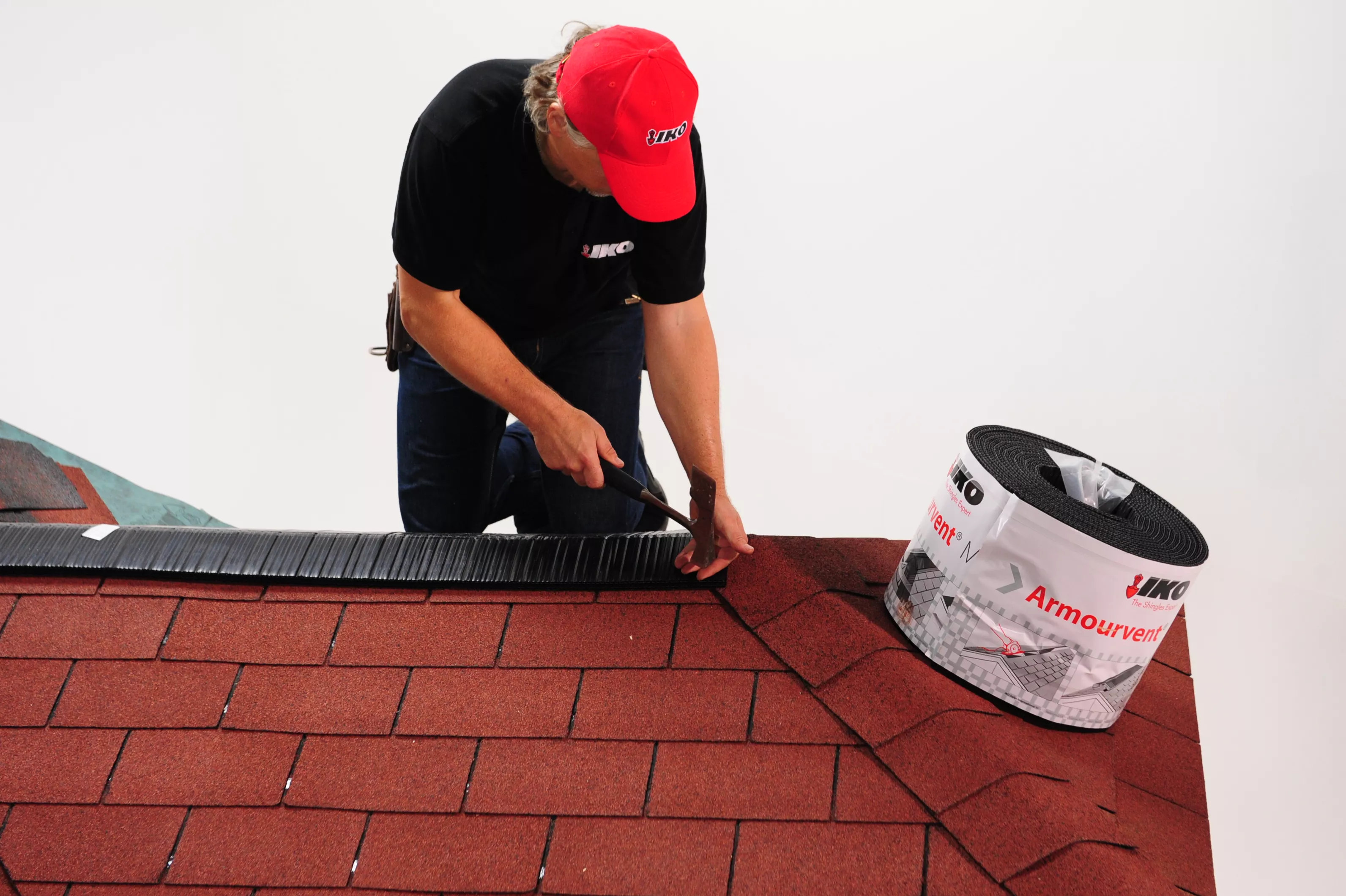Search
Search
1361 results were found.
If accumulations of algae or moss are heavy, a part of it should wash off the roof surface immediately with the stream from the garden hose. Using a brush or broom with medium-stiff bristles you can attempt brushing off algae and moss, but don't scrub too hard. You don't want to brush off the mineral granules from the shingles.
If algae, moss or heavy stains persist on your roof surface after rinsing, let the roof dry, and then spray on the bleach solution again. Again wait for 30 minutes and rinse with a hose. Don't worry if some staining remains after this second rinse. Exposure to rain and sunlight should wash it off over time.
How to prevent algae and moss stains from recurring
Most commonly algae and moss grow on roof surfaces that are shaded and remain humid. Cutting off tree branches that overhang the roof and block sunlight will surely help keeping your roof algae and moss free. Keep the roof surface clean by blowing off leaves and fallen branches during seasonal maintenance.
Long-term stain prevention can be assured by installing zinc or copper strips under the cap shingles, leaving about 6 cm of the surface exposed at roof peaks, along hips, and under the first course of shingles at the base of dormers. Copper and zinc are sacrificial metals that shed tiny fragments of their surface with each rainfall. The metals coat the roof and ban organic growth for many years.
>>> Picture 1 (left): The moss doesn’t grow close to copper metal flashing
>>> Picture 2 (top right): The red lines indicate where to install zinc or copper strips to prevent algae and moss growth.
>>> Picture 3 (top bottom): Ridge with Armourvent Multi and zinc moss repellent tape
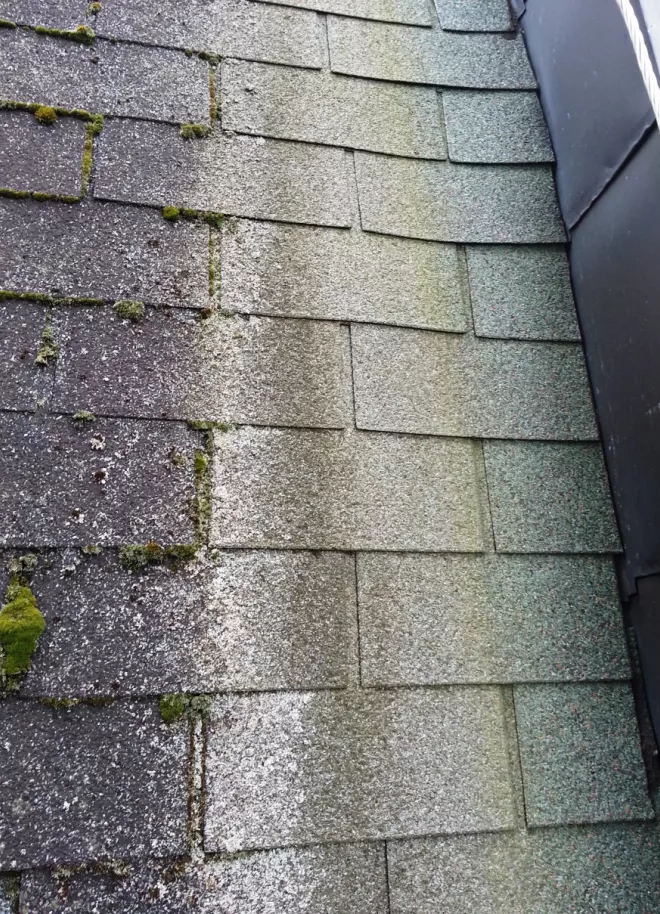
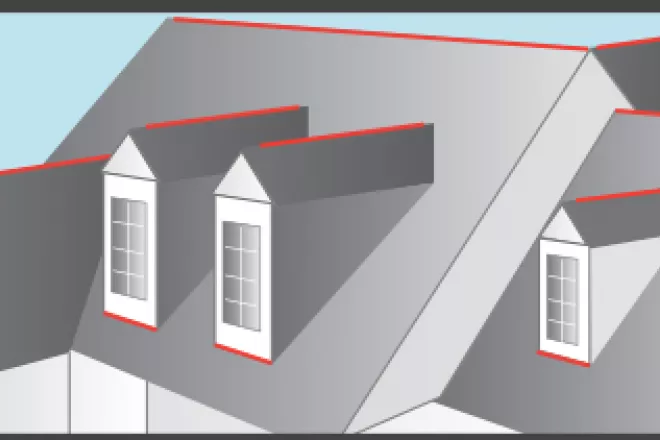
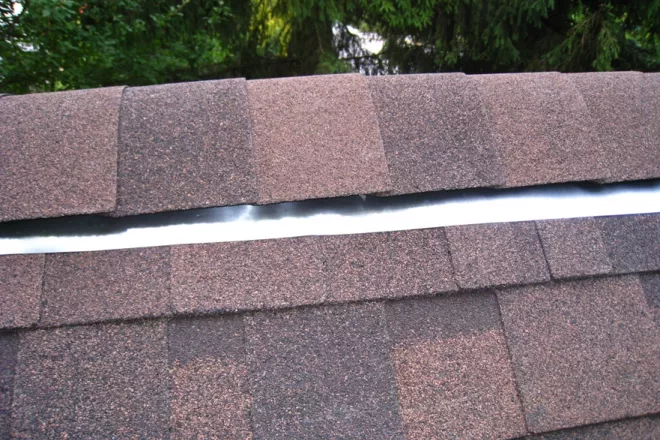
Following these maintenance tips can help you enjoy your attractive roof. They can also help extend your roof’s service life, which is important whether you plan to stay in your home or sell it in the future.
More tips on the protection of your roof can be found in our blogs.
Good luck!
Interested in the product mentioned in this blogpost?:
The future of roofing is lighter, more durable and European Made.
With more than 70 years of experience, IKO is a global leader in shingle technology. We continuously enhance our roofing solutions to meet and exceed European standards. As climate conditions evolve, we strive to improve our products to withstand the challenges of tomorrow: storm and high winds, hot weather, humidity, snow, or persistent rain.
That is why we introduce to you IKO Shingle 2.0:
Lighter, more durable and European made.

Introducing IKO Shingle 2.0
By launching IKO shingle 2.0, we reinforce our commitment to durability and innovation. Our roofing shingles are composed of carefully selected European raw materials, including a fiberglass inlay, bitumen, and a topcoat of natural stone granules available in a variety of colors. Through continuous improvement, we have refined our production process to elevate the quality of our shingles to the next level.
Learn how we enhanced the reliability of our shingles >>>

IKO Shingle 2.0: importance of granules
Finer granules
The new IKO Shingle 2.0 incorporates finer granules, optimizing the granulometry—the distribution, composition, and texture of particles based on their size ranges. This advancement enables a more homogeneous coverage of the shingle surface, which results in an improved UV protection of the bitumen substrate.
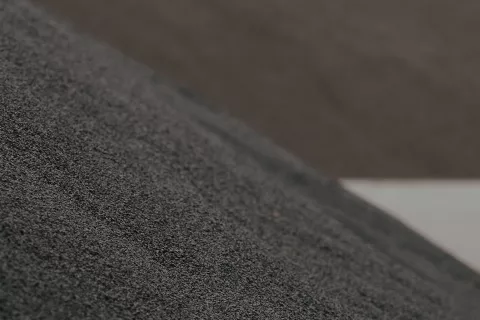
Water-repellent coating
Our aim is to prevent as much as possible the access of water into the structure of the granules. IKO has taken an additional step in innovation by enhancing the surface finish layer with a water-repellent coating. This theory has been proven in the lab. The improved coated granules are less water absorbent and due to its finer structure or granulometry, water has more difficulty of getting through.
See the impressive results of the water-repellent coating on our granules >>>


